Banks are bustling with real estate loans
The real estate lending ratio of many banks in the first half of this year has increased sharply. In particular, the credit growth rate of many banks is up to 20-30%, 3 times higher than the general credit growth rate of the whole system.
The financial report for the second quarter of 2025 shows that in the first half of this year, real estate was a major contributor to credit growth of many banks.
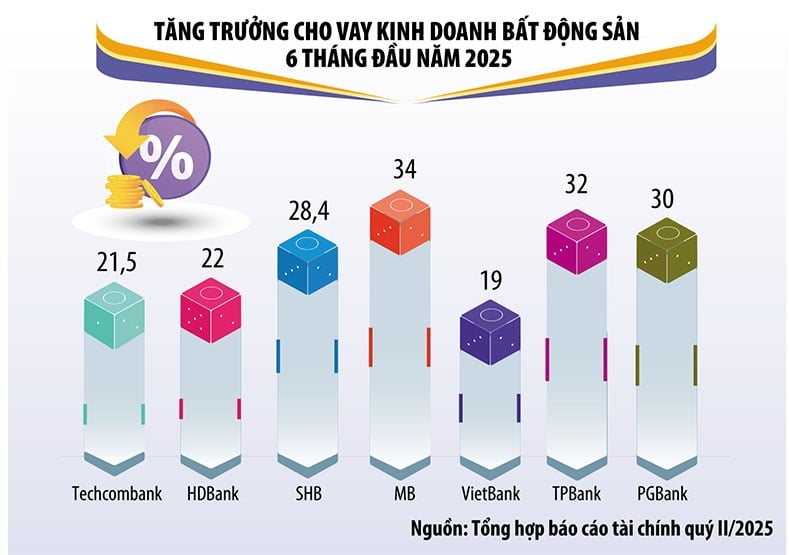 |
For example, at Techcombank , in the first 6 months of this year, real estate business loans (including credit and bonds) accounted for 59% of total outstanding credit. Including individual customers, the proportion of real estate loans at Techcombank reached more than 64% of the total outstanding loan balance of the entire bank. Techcombank's consolidated real estate business credit growth (credit only) reached 21.5% compared to the end of 2024 (nearly double the bank's loan growth of 11.6%).
At many other commercial banks, real estate business loans in the first half of the year also recorded a very strong increase. Specifically, at HDBank, outstanding real estate business loans reached VND 83,125 billion, up 22% compared to the beginning of the year and accounting for 16.4%. AtSHB , outstanding real estate loans reached VND 163,754 billion, up nearly 28.4% compared to the beginning of the year, accounting for 27.5%, instead of 24.5% at the end of 2024. At MB, real estate business loans reached VND 85,834 billion, up nearly 34% compared to the beginning of the year and accounting for 9.72% (up from 8.26% at the end of last year).
Outstanding real estate business loans as of the end of June 2025 at TPBank increased by 32%, at PGBank increased by 30%, at VietBank increased by 19%, at MSB increased by 15%...
As of June 30, 2025, outstanding real estate credit is estimated at VND 3.18 million billion, 2.4 times higher than at the end of 2024 and accounting for 18.5% of the total outstanding debt of the whole system.
It is not difficult to explain why banks are rushing to lend to real estate. Analysts at SSI Research believe that, in the context of the global market still being uncertain regarding tax policies, the driving force for credit growth mainly comes from real estate and infrastructure. These are also two areas that are receiving increasing policy attention, in line with the Government's efforts to stimulate domestic demand and maintain economic growth momentum.
However, Mr. Tran Ngoc Bau, General Director of WiGroup (a company specializing in providing financial economic data) warned that the sharp increase in real estate credit in the context of weak production and consumption poses the risk of "out of sync" credit flow.
Explaining the focus on real estate lending, Mr. Nguyen Anh Tuan, Director of Techcombank's Retail Banking Division, said that people's demand for home ownership is very large. This is a long-term and ever-present need. Techcombank's leaders also affirmed that bad debt (NPL) in Techcombank's home loan segment is being tightly controlled, maintained at around 2%. This rate is tightly controlled thanks to the strategy of choosing collateral from the beginning, as well as the ability to effectively handle collateral. The loans have collateral, so the actual loss rate is very low.
Although the banks claim the risk is low, experts still warn of it. Currently, the social housing loan package (VND145,000 billion) is disbursed very slowly due to lack of supply. Real estate credit has increased sharply mainly because banks have been aggressive in lending to high-end real estate projects. If this situation continues, instability will occur in both the real estate market and banks.
This year, the Government has set a GDP growth target of 8.3 - 8.5%. To achieve this target, economic experts believe that credit for the whole year could increase by up to 18%, instead of the 16% target set by the State Bank of Vietnam (SBV) at the beginning of the year.
Recently (July 31), the State Bank of Vietnam announced an increase in the credit growth target for credit institutions. Along with that, the State Bank of Vietnam requested credit institutions to direct capital flows to production, business, priority sectors and growth drivers; strictly control credit for potentially risky sectors, ensuring safety and efficiency.
According to economic experts, this year, credit growth of 18-20% is in line with GDP growth rate and inflation level, not yet "hot". However, this credit growth rate is only safe under the condition that capital flows into priority sectors. On the contrary, if credit flows into speculative sectors such as stocks, real estate, etc., then asset bubbles may form, putting pressure on interest rates, inflation, causing bad debt risks and macroeconomic instability.
“If capital flows into priority sectors, this year’s credit only needs to increase by 17-18% to meet the GDP growth demand of 8.3-8.5%. However, if it flows into speculative sectors such as securities, real estate, etc., credit must increase by over 20% to achieve the GDP growth target of 8.3-8.5%,” said Associate Professor, Dr. Nguyen Huu Huan (Ho Chi Minh City University of Economics).
In the context of strong credit growth, in recent months, some commercial banks have begun to slightly increase deposit interest rates for many terms, applied to large deposits.
Faced with this situation, on August 4, the State Bank held a meeting with commercial banks, requesting them to stabilize deposit interest rates; continue to reduce operating costs, promote digital transformation, and be willing to share part of their profits to reduce lending interest rates. Mr. Pham Chi Quang, Director of the Monetary Policy Department (SBV), said that the average newly generated deposit interest rate was only 4.18%/year, basically stable compared to 2024. The average lending interest rate decreased to 6.53%/year, a decrease of 0.4 percentage points compared to the end of 2024.
The State Bank of Vietnam requires credit institutions, in addition to maintaining stable interest rates, to strive to reduce interest rates while directing credit to production, business, priority sectors and growth drivers; strictly control credit for potentially risky sectors, ensuring safety and efficiency.
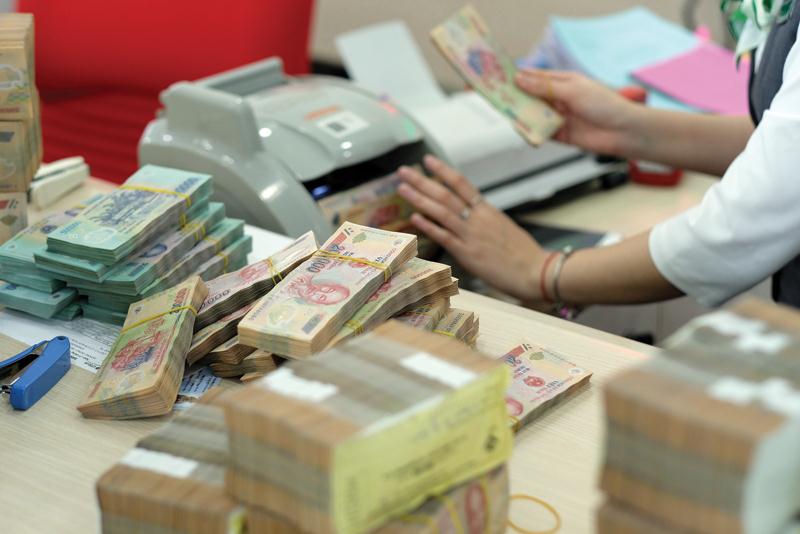 |
Accordingly, the Prime Minister requested the State Bank of Vietnam ( SBV) to urgently develop a roadmap and pilot the removal of credit growth quotas to be implemented from 2026; in which it is necessary to develop standards and criteria for credit institutions to operate effectively, healthily, have good governance and management capabilities, comply with safety ratios in banking operations and high safety credit quality indexes..., ensuring publicity and transparency.
The State Bank is responsible for inspection, examination, supervision and post-audit, preventing systemic risks, ensuring security and safety of the credit institution system and controlling inflation according to the set target.
Strive to achieve the highest goals, tasks and solutions set out in the Project "Restructuring the system of credit institutions associated with bad debt settlement in the period of 2021 - 2025" as approved by the Prime Minister in Decision No. 689/QD-TTg dated June 8, 2022, focusing on promoting bad debt settlement, implementing measures to strictly control credit in areas with potential risks, improving credit quality, minimizing new bad debts, ensuring safe and healthy credit growth along with strict control of bad debts.
At the same time, strengthen monitoring, inspection, examination and close, comprehensive supervision of the operations of credit institutions; take measures to prevent, inspect, supervise and strictly handle according to the law acts of manipulation, cross-ownership, and credit granting to "backyard" enterprises and enterprises in unhealthy ecosystems...
The Prime Minister also requested the State Bank to continue directing credit institutions to reduce costs, simplify administrative procedures, and promote digital transformation... to create more room to reduce lending interest rates, support production and business of enterprises and people in the spirit of "harmonious benefits, shared risks"; direct credit capital to priority areas, traditional growth drivers of the economy (investment, export, consumption) and new growth drivers (science and technology, innovation, digital economy, green economy, circular economy...) according to the Government's policy, ensuring safe and effective credit growth expansion.
At the same time, review, develop and immediately supplement priority mechanisms and policies to more effectively and drastically implement the credit program for young people under 35 years old to buy, rent, or hire-purchase social housing, the VND 500,000 billion credit program for enterprises investing in infrastructure, science, technology, innovation, digital transformation, etc. Policy implementation must be timely and effective; not formal, and definitely not allowing money to be disbursed.
The State Bank must urgently develop a plan to manage monetary policy for the last months of 2025 and 2026, and report to the Government Standing Committee before August 30, 2025.
The Association also called on members to consider reducing loan interest rates and implementing appropriate credit programs according to their financial capacity to facilitate people and businesses to access credit capital at reasonable interest rates.
 |
On August 7, 2025, the Vietnam Banks Association issued Official Dispatch No. 423/HHNH-PLNV calling on member credit institutions (CIs) to join hands in implementing the direction of the State Bank of Vietnam (SBV) on applying interest rates and credit, focusing on stabilizing interest rates and reducing lending rates to support people and businesses.
Specifically, the Association recommends that credit institutions coordinate closely in the spirit of cooperation to stabilize deposit interest rates at all terms, while continuing to promote digital transformation, reduce reasonable costs, and create room for reducing lending interest rates. On that basis, depending on their financial capacity, consider reducing lending interest rates and implementing appropriate credit programs to facilitate people and businesses to access credit capital at reasonable interest rates.
Publicly and fully announce the average lending interest rate, as well as preferential credit programs on the credit institution's website to ensure transparency and help customers easily access credit.
Prioritize the allocation of credit capital to production and business sectors, priority sectors and economic growth drivers, while strictly controlling credit to potentially risky sectors, to ensure credit growth targets go hand in hand with operational safety.
Closely coordinate with the Banking Association to promote communication work so that people and businesses can grasp the policies and products and services of credit institutions in order to meet the capital needs for production and business and use the products and services of credit institutions effectively.
At the regular online Government meeting in July with provinces and centrally run cities held on August 7, chaired by Prime Minister Pham Minh Chinh, Ms. Nguyen Thi Hong, Governor of the State Bank of Vietnam, said that up to now, the lending interest rate level has continued to decrease by about 0.4%/year compared to the end of 2024, showing flexible management efforts, supporting the reduction of financial costs for the economy.
However, the exchange rate is under considerable pressure due to the dual impact of economic factors and market psychology. Up to now, the VND/USD exchange rate has increased by 2.9% compared to the end of 2024. In that context, the Governor said that if the pressure continues to increase sharply, the State Bank will consider not further reducing interest rates to avoid affecting exchange rate stability - thereby causing macroeconomic instability.
"We will closely monitor developments and set appropriate priorities for each stage, aiming towards the common goal of macroeconomic stability and supporting sustainable economic growth," Governor Nguyen Thi Hong affirmed.
Regarding credit, the State Bank said that system-wide credit in the first 7 months of the year increased by about 10% compared to the end of 2024 - a fairly high increase compared to 6% in the same period last year.
Concerned that credit is flowing strongly into real estate and securities, Governor Nguyen Thi Hong analyzed: The credit growth rate in these two sectors is indeed higher than the average, but that is consistent with the direction of removing difficulties for the real estate market. When the project is cleared of legal obstacles, the need for capital for implementation is inevitable.
Regarding the securities sector, although the growth rate is high, the proportion only accounts for 1.5% of total outstanding debt, not causing systemic risk. The State Bank affirms that it is always closely monitoring safety indicators. The ratio of short-term capital used for medium- and long-term loans is still below the threshold of 30%. At the same time, it continuously directs credit institutions to balance capital by term, ensuring system safety.
Investing heavily in anticipation of peak season
Credit accelerated in the first half of the year and is expected to continue the positive trend in the second half. Banks are gradually increasing lending, interest rates remain stable.
Mr. Pham Toan Vuong, General Director of Agribank, said that by the end of June 2025, Agribank's credit balance reached over VND 1.85 million billion, an increase of 7.6% compared to the beginning of the year. Agribank has promptly implemented 13 credit programs/products with a scale of VND 400,000 billion to boost credit growth from the beginning of the year; increasing the scale and expanding the scope of credit programs for the agriculture - forestry - fishery sector to VND 20,000 billion. In particular, Agribank has proactively removed difficulties, reduced costs, and reduced lending interest rates to support customers.
As for ACB, implementing Resolution No. 68-NQ/TW of the Politburo on private economic development, this bank has built strategic solution groups, such as deploying a credit package of 20,000 billion VND exclusively for small and medium enterprises with interest rates at least 2% lower than usual, shifting to loans without requiring collateral...
At the end of the first 6 months of the year, ACB's outstanding credit balance reached VND 634,000 billion, up 9.1% over the beginning of the year, with a balanced structure between individuals and businesses; pre-tax profit reached VND 10,700 billion, up 2% over the same period in 2024.
Up to this point, banks have all announced their business results for the first 6 months of the year. The "club" with profits of over 10,000 billion VND includes MB, BIDV, Techcombank, VPBank, ACB... Good credit growth has positively impacted the profits of these banks.
For example, in the first 6 months of the year, MB's consolidated pre-tax profit reached nearly VND 15,900 billion, up 18.3% over the same period. MB's total consolidated assets reached nearly VND 1.3 million billion, up 14.2% compared to the end of 2024. Customer loans reached nearly VND 880,000 billion, up 13.3% compared to the beginning of this year. Therefore, MB's net interest income reached more than VND 24,064 billion, up 23% over the same period last year...
According to Mr. Tu Tien Phat, General Director of ACB, customers' capital needs often increase during the peak business season at the end of the year.
To achieve a breakthrough in credit growth, the State Bank of Vietnam (SBV) said that the entire industry has implemented a series of credit programs, such as a loan program to build social housing and workers' housing; renovate and rebuild old apartments (VND 145,000 billion); a credit program to invest in infrastructure and digital technology to implement key and important national projects in the fields of transportation, electricity and digital technology (VND 500,000 billion); a loan program for the agriculture, forestry and fishery sector (increasing the scale to VND 100,000 billion).
According to the latest statistics of the State Bank, by the end of July 2025, credit of the whole system increased by 9.64% compared to the end of last year. In the context of accelerating credit, the State Bank recently increased credit targets for many banks, at the same time directing capital flow into production, business, priority sectors and economic growth drivers...
Mr. Dinh Duc Quang, Director of Currency Trading Division (UOB Vietnam Bank) commented that credit growth for the whole year of 2025 is likely to reach 18-20%. This is a strong supporting factor for economic growth. In the most optimistic scenario, if the US Federal Reserve (Fed) reduces USD interest rates in the last months of the year, the tariff impact is small and the stock market is upgraded, strongly attracting foreign capital flows, then it can be hoped that VND interest rates will decrease more strongly, thereby positively affecting the economic growth plan in 2026.
Deputy Governor of the State Bank of Vietnam Pham Thanh Ha said that in managing interest rates in the first half of 2025, the management agency will continue to maintain the operating interest rates, creating conditions for credit institutions to access capital sources from the State Bank at low costs, thereby creating conditions to support the economy. The lending interest rate level continues to decrease. The average lending interest rate for new transactions of commercial banks is currently at 6.29%/year, down 0.64 percentage points compared to the end of last year. In the last months of the year, according to the Government's policy, the State Bank of Vietnam will continue to require banks to reduce costs in order to further reduce lending interest rates and stimulate credit demand.
Banks are stuck with assets received from execution of judgments.
For the secured assets received from the enforcement agency, the credit institution cannot sell them and cannot ask the enforcement agency to continue auctioning them because the nature of these assets has gone through many failed auctions.
The Vietnam Banks Association (VNBA) has just issued Document No. 421/HHNH-PLNV dated August 5, 2025, requesting the Ministry of Agriculture and Environment, the Ministry of Justice and the State Bank of Vietnam to address the difficulties and problems that member credit institutions (CIs) are facing when receiving real estate as collateral to handle bad debts.
 |
According to the feedback from member credit institutions, one of the important measures to handle bad debt is to accept the real estate as collateral to replace the debt repayment obligation of the customer. This is mainly done in two forms: the bank and the customer agree to offset the debt, or the credit institution receives the collateral back from the Enforcement Agency after many unsuccessful auctions.
According to the Law on Credit Institutions, banks are not allowed to do real estate business but are allowed to hold this property for a maximum period of 5 years to handle debt collection.
However, the reality is that the Land Registration Offices and the Department of Agriculture and Environment in many localities have refused to register changes and transfer ownership of real estate to credit institutions.
These agencies require credit institutions to have a written approval of the transfer policy from the Provincial People's Committee and to carry out procedures for converting land use purposes.
This requirement, according to credit institutions, is not consistent with the nature of holding assets to handle bad debts, which is not a business activity or purchasing assets for direct use.
The failure of credit institutions to register ownership has led to many consequences.
Firstly, the property cannot be auctioned: Because their names are not on the Land Use Rights Certificate, credit institutions cannot sell or transfer the property to the buyer themselves. Notary organizations also refuse to notarize sales contracts for this reason.
Second, deadlock with assets from enforcement: For assets received from enforcement agencies, credit institutions cannot sell them. Returning to enforcement agencies for further auctions is not feasible, because the nature of these assets has gone through many failed auctions.
Third, accounting problems: According to the State Bank's regulations in Decision 479/2004/QD-NHNN, to record the value of assets in the balance sheet account (Account 387), credit institutions must have full documents proving legal ownership. Because it cannot be registered, credit institutions cannot account for this asset, making the purpose of receiving the asset unachievable.
Fourth, the risk of disputes: Even though the customer has handed over the property, legally, their debt obligations are still on the books and continue to arise. This poses a risk of disputes and lawsuits in the future, especially when real estate prices increase, the old owner can reclaim the property.
Faced with the above difficulties, the Vietnam Banking Association recommends that the Ministry of Agriculture and Environment issue a document guiding the Departments of Agriculture and Environment nationwide, allowing credit institutions to register the transfer of rights/register changes in real estate assets in both cases: receiving collateral through an agreement and receiving it from the enforcement agency, so that credit institutions have full authority to auction the assets and transfer the name to the buyer.
After the transfer of rights/change registration is registered, the credit institution is responsible for proactively monitoring, selling, transferring or repurchasing the real estate within 5 years from the date of the decision to handle the property. If the credit institution violates, it will be handled according to the provisions of law.
For the State Bank of Vietnam, the Vietnam Banking Association proposes to study and issue a guiding document on the recognition of assets assigned to debt and assets received in lieu of performing obligations to guide credit institutions in accounting for real estate assets when credit institutions receive in lieu of customers' debt repayment obligations and hold collateral for 5 years and must sell, transfer or repurchase real estate to recover debt in accordance with Clause 3, Article 139 of the Law on Credit Institutions.
Guidance on risk provisioning in case credit institutions receive collateral in lieu of obligations and hold them for 5 years.
Coordinate with the Ministry of Agriculture and Environment and the Ministry of Justice to resolve the Banking Association's petition regarding problems with property change registration, so that credit institutions have the right to handle the property and transfer the name to the buyer.
Mr. Shaokai Fan: Gold cannot be compared with stocks and real estate.
Gold is proving to be less attractive than other investment channels such as stocks and real estate in the race for price increases. However, speaking to the Investment Electronic Newspaper, a representative of the World Gold Council said that the position of gold is irreplaceable.
 |
| Mr. Shaokai Fan, Regional Director for Asia-Pacific (excluding China) and Director of Global Central Banks at the World Gold Council. |
According to the World Gold Council's report, gold demand in Vietnam in the second quarter of 2025 decreased by 20% compared to the same period last year, contrary to the general trend of the world (up 3%). The reason for the decrease in gold demand in Vietnam is due to the devaluation of the domestic currency along with the high USD price, causing the domestic gold price to skyrocket to a record level, causing barriers to people's ability to pay.
In addition to the high price of gold, many people believe that one of the reasons for the recent cooling of gold prices is that the price of gold has increased slowly, while stocks and real estate prices have increased rapidly. This has made gold a less attractive investment channel in the second quarter.
Responding to a question from the Investment Electronic Newspaper - Baodautu.vn - on August 7, Mr. Shaokai Fan, Director of the Asia-Pacific region (excluding China) and Director of Global Central Banks at the World Gold Council, said that it is true that there are many investment channels, many different types of assets, and each investment channel and each type of asset has different characteristics. Gold is a very special asset that any investor must pay attention to when managing their investment portfolio.
According to Mr. Shaokai Fan, gold cannot be compared with other investment channels because the nature of gold is very different from investment channels in stocks, real estate, etc. Specifically, gold has defensive and risk-absorbing properties, increasing the resilience of the portfolio. This is a property that other investment channels and assets do not have, and this property creates the irreplaceable characteristic of gold.
In fact, in the context of an increasingly unpredictable world with many unstable factors, gold is becoming a safe defensive asset chosen by many investors and large markets around the world, including central banks.
A survey by the World Gold Council shows that most central banks around the world still plan to increase purchases, both to diversify their foreign exchange reserve portfolios and to hedge against increasing political risks.
"We see that in the past 5 years, many major risks have occurred globally: Covid-19, the Russia-Ukraine conflict, the conflict in the Gaza Strip, the trade war... In times of great risk, gold is an asset that helps investors overcome the crisis. This is also the reason why central banks and large investors around the world continuously add gold to their investment portfolios. Vietnam is an export-oriented economy, in the context of the current complicated trade war, investors also need to pay attention to gold to increase the resilience of their portfolios," said Mr. Shaokai Fan.
In Vietnam, gold demand decreased by 20% in volume, but the value still increased by 12% in value in the second quarter of 2025, showing that people's desire to buy is still very large. Currently, the Government is amending Decree 24/2012/ND-CP on the gold market in the direction of removing the monopoly and increasing the gold import limit. This expert believes that loosening gold imports will bring many benefits to the market.
Commenting on the gold price movement in the coming time, Mr. Shaokai Fan said that gold prices are still benefiting from the huge buying demand from central banks and exchange-traded funds (ETFs). In addition, trade tensions have not yet ended, especially as the world is waiting for the final results of the tax negotiations between the US and China. The fact that the US Federal Reserve (Fed) is under great pressure to cut interest rates also supports gold prices.
The World Gold Council report shows that global gold demand will continue to increase in the second quarter of 2025. Investment in gold exchange-traded funds (ETFs) remains the main driver of total demand, with inflows of 170 tonnes in the quarter, in contrast to slight outflows in the second quarter of 2024. Asian-listed funds contributed significantly with 70 tonnes, on par with US funds.
Combined with record inflows in the first quarter, total gold demand from global gold ETFs reached 397 tonnes – the highest level in the first half of the year since 2020.
Central banks continued to buy gold, albeit at a slower pace, adding 166 tonnes in Q2. Despite this slowdown, central bank purchases remain significantly high due to the continued economic and geopolitical uncertainty.
The World Gold Council's annual survey of central banks shows that 95% of reserve managers believe that global central bank gold reserves will increase over the next 12 months.
Mr. Shaokai Fan commented: "Investment in gold remains high due to the demand for safe-haven assets and the increasing momentum of capital flows into the market."
Bond issuance in July increased sharply, real estate bonds reached a peak due in August 2025
Non-bank bonds maturing in the second half of this year are about VND102,000 billion, double the size of the first half (VND44,400 billion), mainly real estate. In August 2025 alone, real estate bonds maturing amounted to VND17,500 billion.
 |
According to data from the Vietnam Bond Market Association, as of the information announcement date of July 25, 2025, the amount of corporate bonds issued in July 2025 was VND 20,134 billion.
Accumulated from the beginning of the year to the date of information announcement on July 25, the total value of corporate bond issuance was recorded at approximately VND 287,000 billion (90.3% of which were privately issued bonds). Up to 75% of the issued bonds came from the banking group.
Thus, corporate bond issuance is recovering strongly (accumulated corporate bond issuance in the first 7 months of 2024 reached 183,000 billion VND).
According to the Association, the total value of bonds maturing from now until the end of the year is more than 118,000 billion VND, with 52.2% of the value of bonds about to mature belonging to the real estate group.
FiinGroup's aggregated data shows that by the end of June 2025, the total market size reached VND1.35 trillion. By issuance method, outstanding individual corporate bonds reached nearly VND1.2 trillion at the end of June 2025, up 4.3% compared to the previous month and accounting for about 88.6% of the total value of corporate bonds in circulation. In contrast, the circulating value of public corporate bonds decreased slightly by -0.8% compared to the previous month, down to VND154.8 trillion, after the public bond lot of LPB bank (issued in June 2023) was bought back before maturity.
In the first 6 months of the year, new bond issuance reached nearly 200,000 billion VND, an increase of nearly 109% over the same period last year.
According to FiinGroup, about VND102,000 billion of corporate bonds (excluding banks) are due for payment in the second half of this year. This figure is double the first half of the year (VND44,400 billion), showing the existing pressure on payment cash flow.
Real estate businesses need VND65,300 billion to mature bonds in the second half of the year. Maturity pressure peaked this month at about VND17,500 billion, 3.8 times higher than the average maturity scale in the first 7 months of 2025 (VND4.6 trillion). However, maturity pressure will gradually decrease to VND6,000-12,000 billion per month.
According to FiinGroup, some enterprises with large volumes of maturing bonds include Quang Thuan Investment Joint Stock Company (VND6,000 billion), Trung Nam Land (VND2,500 billion) and Setra (VND2,000 billion).
It is estimated that non-banking enterprises need to pay VND6,600 billion in bond interest in August. Real estate continues to account for an overwhelming proportion with about VND4,200 billion, equivalent to 63% of interest payment obligations.
The value of corporate bonds bought back in June 2025 reached a record high of over VND62.9 trillion, a sharp increase of 190% compared to the previous month and 139% over the same period, mainly from the banking sector. In the first 6 months of 2025, the total buyback value reached nearly VND123.3 trillion, an increase of 31% over the same period.
In terms of payment cash flow, issuers have paid VND91.4 trillion in principal and interest on corporate bonds since the beginning of the year, equivalent to 32% of the expected payment obligation for the whole of 2025. The expected cash flow to be paid is VND201.2 trillion in the second half of the year, including VND48.1 trillion in August.
Banks no longer prioritize "savings"?
Not only is it a “safety cushion”, risk reserves are also “savings” for banks. Recently, many banks have handled the debts that were delayed or postponed in the previous stage, so they have reduced risk provisions, or accepted to reduce provisions to prioritize growth.
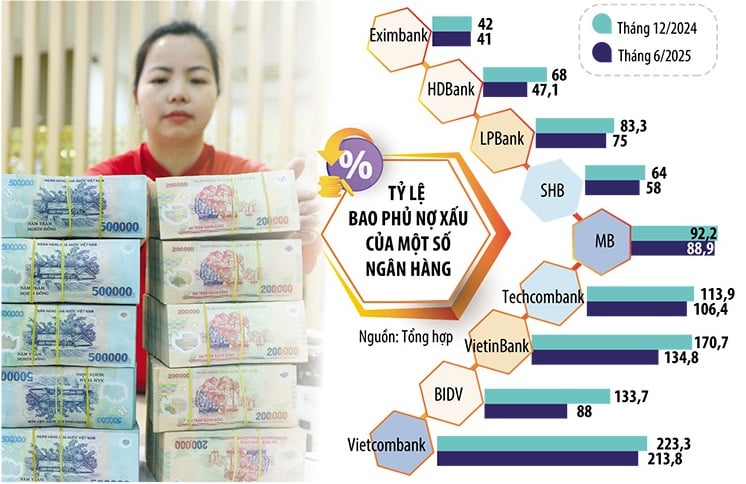 |
The financial report for the second quarter of 2025 shows that 85% of listed banks recorded positive profit growth, more than half of banks recorded double-digit profit growth. In particular, many banks recorded a profit increase of 30-80%, such as SHB, PGBank, Sacombank, VietinBank, SeABank...
However, financial reports also show that to maintain high profit growth in the first half of this year, many banks have had to accept reducing their risk buffers.
Leading in terms of bad debt coverage ratio is the group of state-owned commercial banks (“Big 4”), but among them, only Agribank increased its bad debt coverage ratio in the first half of this year. The separate mid-year financial report shows that, as of the end of June 2025, Agribank's bad debt coverage was 148.6%, an increase of 16.8% compared to the beginning of the year.
Meanwhile, BIDV's bad debt coverage (according to the consolidated financial report) is only 88%, a sharp decrease compared to 133.7% at the end of 2024 and 96.8% at the end of the first quarter of 2025. BIDV's total bad debt increased by 49% in the first 6 months of 2025, up to VND 43,140 billion, while the provision increased by only 9.5%, causing bad debt coverage to decrease sharply.
Although Vietcombank is still the champion in terms of bad debt coverage across the system (213.8%), it has also witnessed a decline compared to the end of last year (223.3%). At VietinBank, bad debt coverage is only 134.8%, instead of 170.7% at the end of last year.
Most private joint stock commercial banks are also in a state of gradually decreasing risk buffers, currently only a few banks have a bad debt coverage ratio of over 100%.
Specifically, at MB, the bad debt coverage ratio at the end of June 2025 was only 88.9%, instead of 92.3% at the end of 2024. At HDBank, bad debt coverage was only 47.1%, much lower than the level of nearly 68% at the end of last year. At SHB, bad debt coverage is currently 58%, while at the end of last year it was nearly 64%. Similarly, LPBank also reduced the bad debt coverage ratio from 83.3% at the end of last year to 75% at the end of the second quarter of 2025. Some banks with low bad debt coverage ratios are VIB (37.16%), NamABank (39%), EximBank (41%), MSB (55.5%)...
From 2022 to now, the bad debt coverage of the entire banking system has decreased sharply. If in the third quarter of 2022, the bad debt coverage was 143.2%, then by the third quarter of 2023 it had dropped below 100% and at the end of the first quarter of 2025 it was only about 80%.
It is understandable that commercial banks accept to reduce provisions to prioritize growth, when the pressure on profit growth from shareholders is very high. In addition, the current economic context also has many differences compared to the previous period, making the reduction of provisioning ratio a trend in the past few years.
According to experts, in the period 2020-2022, bad debts swelled due to the impact of Covid-19, many banks had to restructure debts, extend and defer debts for customers. Also in this period, banks increased risk provisions. However, currently, the debts extended and deferred in the above period have been handled, so banks, especially the "Big 4" group, do not need to maintain a very high bad debt coverage ratio.
In recent years, when Resolution No. 42/2017/QH14 on piloting bad debt settlement of credit institutions expired, some banks were worried about the difficulty in recovering and handling collateral when the "debtors" were slow and uncooperative, so they still actively increased provisions. However, recently, the Law on Credit Institutions (amended) was passed, the right to seize collateral of credit institutions was legalized, this concern of banks was also relieved. Therefore, although bad debt coverage has decreased, it is not too risky for banks.
In fact, not only is it a "safety cushion", risk reserves are also "savings" for banks and at many times, this amount contributes greatly to bank profit growth.
In the first half of this year, many banks recorded large profits thanks to a surge in debt collection and risk handling (from reserves). Specifically, in the first 6 months of the year, Agribank's net profit from other activities reached nearly VND 6,000 billion (second only to the credit segment) and increased by more than 91%. At Techcombank, while most business activities decreased compared to the same period in 2024, net profit from other activities alone increased by 3.1 times compared to the same period (more than 66% of profit from this segment came from debt that had been handled with risks). Similarly, at ACB, LPBank..., net profit from other activities also increased by 2-3 times (mainly from bad debt collection handled with risk provisions).
Therefore, analysts recommend that banks need to improve their reserve capacity, protect assets, and strengthen market confidence. In the context of the Vietnamese banking system still being undercapitalized (the Capital Adequacy Ratio is at a low level in the region), credit is growing rapidly, and the State Bank has just loosened the "room" for some banks, strengthening the reserve buffer is even more necessary.
Source: https://baodautu.vn/ngan-hang-o-at-cho-vay-bat-dong-san-thi-diem-bo-room-tin-dung-tu-nam-2026-d354104.html







![[Photo] National Assembly Chairman Tran Thanh Man receives First Vice Chairman of the Federation Council of the Federal Assembly of the Russian Federation](/_next/image?url=https%3A%2F%2Fvphoto.vietnam.vn%2Fthumb%2F1200x675%2Fvietnam%2Fresource%2FIMAGE%2F2025%2F12%2F02%2F1764648408509_ndo_br_bnd-8452-jpg.webp&w=3840&q=75)













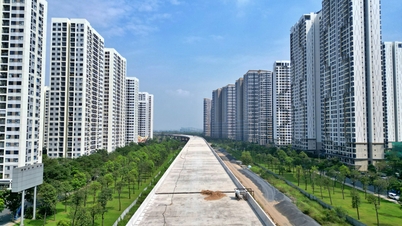






































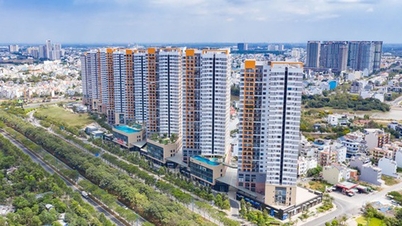


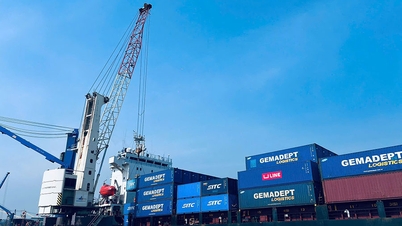










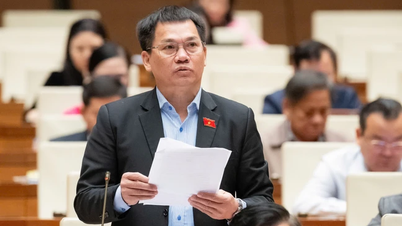




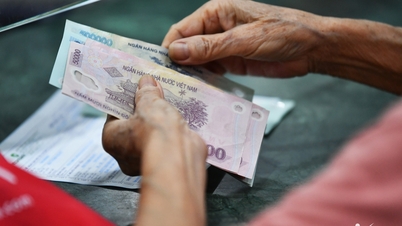
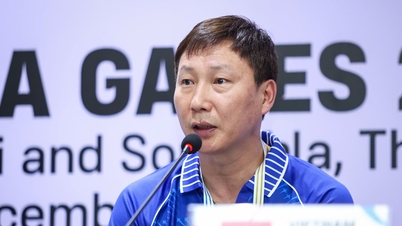






























Comment (0)